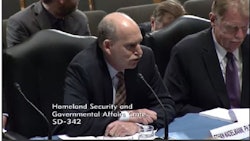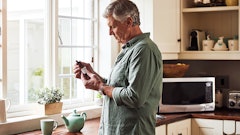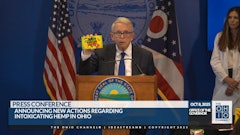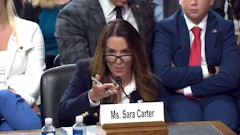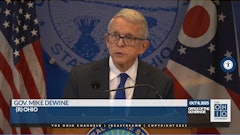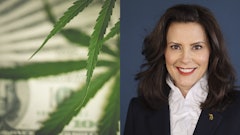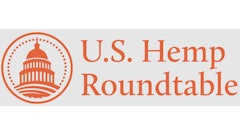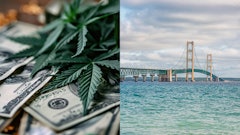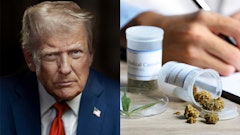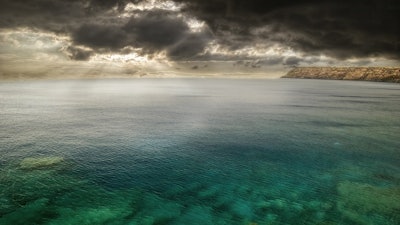
Hawaii’s dispensary/cultivation program might leave patients, and dispensaries, without medication.
Every state cannabis law has its fair share of issues: Washington’s tax on cannabis is making deep gashes into retailers’ margins, Illinois’ restrictions on the types of diseases and symptoms excludes thousands of otherwise qualified patients, and California’s until-recently-lax laws have had legislators wondering if the program had gotten a bit out of control.
But Hawaii’s recently rolled out dispensary program presents a set of problems unlike any other in the country on account of its island geography. Hawaii Revised Statutes 329D, which created the state’s dispensary program in July 2015, 16 years after medical cannabis was legalized, includes a section stating, “[a] dispensary shall not transport marijuana or manufactured marijuana products to another county or another island.” If the state ban wasn’t enough, the waters between the Hawaiian Islands are under federal jurisdiction, making them federal property.
Another section of Hawaii’s dispensary law requires that cannabis products be lab-tested for content, contamination and consistency before making it out to market. The issue here is that not every island is equipped with properly licensed testing labs.
State legislators realized their mistake and have addressed this issue. A bill allowing the inter-island transport of cannabis for testing purposes is currently sitting on Gov. David Ige’s desk awaiting his signature. Sources have told CBT that Gov. Ige will be signing the bill on Monday, July 11.
But a much more problematic threat still remains: an island-specific cannabis-shortage caused by an island’s entire cannabis crops being wiped out by a mite or mildew problem.
“When talking about the isolation of islands, there are certain species of flora and fauna only seen on certain islands,” says Christopher Garth, the executive director of the Hawai’i Dispensary Alliance, a not-for-profit lobbying group representing the interests of the legal cannabis market in the state.
Garth is quick to add the odds of such a problem arising are extremely slim. But legislators still have left licensees with a less-than-stellar framework to respond to such events.
There are currently eight licensees operating in four Hawaiian counties: three dispensary licenses were awarded to growers in Honolulu; two dispensary licenses each were awarded to growers in the counties of Hawaii and Maui; and one dispensary license was awarded to a grower in the county Kauai. Each license allows for two dispensaries and two growing facilities, meaning a total of 16 dispensaries and growing facilities will supply medication to the island’s estimated 14,492 cannabis patients.
On top of that, Hawaii only allows indoor grows. While these types of facilities allow for highly controlled environments, experts agree that even a slight deviation in the controlled settings can wreak havoc on a crop.
All licensees must operate in a vertical-integration model, meaning they must grow the products that will be sold in their dispensaries. In the unlikely event an island’s entire crops were decimated — an event much more likely on islands with fewer licenses — other islands would not be allowed to supply that island’s dispensaries with product to ensure an adequate supply of medication to that island’s patients. The same applies if a county experiences a cannabis shortage because it is underserved by the amount of licenses it has been awarded.
This vertical-integration model also limits the incentives to compete with other licensees, although Garth says the first battle is going to be with the Aloha State’s well-established black market. Since medical cannabis was legalized in 2000 but the dispensary system will only officially be active on July 15, 2016, illegal growers have had time to build up a solid market using medical patients.
Even state legislators realize the shortcomings of the law. “What we came up with, I don’t choose to defend, I think it’s extremely imperfect,” said state Sen. Russell Ruderman, D-Puna, during a public Q&A session about the state’s cannabis dispensary program according to the Hawaii Tribune-Herald.
Even state legislators realize the shortcomings of the law. “What we came up with, I don’t choose to defend, I think it’s extremely imperfect,” said state Sen. Russell Ruderman, D-Puna, during a public Q&A session about the state’s cannabis dispensary program according to the Hawaii Tribune-Herald.
Currently, the state does not have any requirements regarding clean rooms. With that being said, the island state’s growers are taking every precaution possible to avoid such issues, Garth says.
“Even in the worst case scenario, we’ve taken the precautions to ensure we still have medicine available by having an unlimited number of clones and seedlings,” he explains. His group lobbied officials to have the 3,000 plant canopy limit exclude clones and immature plants smaller than 1 foot by 1 foot.
In addition to having an unlimited amount of clones and seedlings, home grows will still be allowed for medical patients, although the caregiver program will be phased out by December 2018. Garth believes this will also limit the impacts of an island’s massive crop failure.
But Garth is hopeful that as the regulated industry grows in the Aloha State, rules and regulations will evolve with it.
“Every small success comes with a bigger next step,” Garth says.
Photo by: ID 5238842 © Dmitry Kushch | Dreamstime.com
Photographed on Big Island. Hawaii. USA











